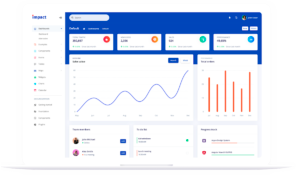Best project management tools for small businesses
18 min read
Are you looking for the best project management tool to manage your projects and team members? We have compiled a list of the best project management tools for service businesses and remote teams.
As a business owner or team manager, you’ve to juggle multiple roles. You supervise your team, manage client relationships, do sales, and keep track of finances. You need a strong process and the right project management tool to make sure you’re on top of the work your team does.
A solid project management process is critical to the success of all teams. Using the right project management tools and techniques can help your team ensure timely delivery, stay productive and manage cost.
A good project management software can not only keep track of time but also help you stay on top of your work. It will save you time and make sure you stay on top of your project.

What is a project management tool?
Project management is the discipline of planning, organizing, and managing resources to complete a project. Any task that involves multiple related activities can be considered a project. A project can be simple or complex.
Henry Ford once said “Nothing is particularly hard if you divide it into small jobs”.
You use a project management tool to break down a project into smaller, more manageable tasks. You can assign these tasks to different team members and track them to completion. With the right tool, you can track how much time is spent on each task, whether it’s done on time or not and how much it cost. You can also see who your most productive team members are, which clients or projects are most profitable and where you may be losing money.
Let’s say you need to deliver a new website design to a client in four weeks. You can break down this project in to many smaller tasks like collecting the business requirements, drawing wireframes, designing user interface and user experience and laying out each page. Each of these tasks can be further broken down into more granular tasks.
Once you’ve created the list of tasks in your project management tool, you can assign due dates to each of them in a way that ensures the project will finish on time. Then you assign each task to a team member to complete.
You can then monitor each tasks and the overall project progress by tracking which tasks are on track and which ones are behind schedule. Most top project management tools can also track how much time team members spend on each task and how much it cost you.
Why should you use a project management tool?
At the high level, a project management software streamlines your business, ensures you meet clients’ expectations and invoice them correctly. But there are many other benefits of using a project management software:
- Better collaboration bet ween team members due to improved visibility of each other’s work
- Accurate task tracking that shows which tasks are at risk of going beyond due date the potentially derailing the project
- Better project tracking as you see how much cost and effort is going into each project and why
- Accurate time tracking for each tasks and overall project
- Improved team productivity due to better collaboration, accurate tracking and real time feedback
- Centralized data storage for projects for future bids/estimates
- Automated and real time reporting
How to select the best online project management tool?
As you set up and execute the project, you will need a robust tool to effectively manage your project. Project management tools come in many different flavors and can have many different features. What you need is a tool that meets your business needs and budget.
A software that helps NASA launch rockets is very powerful but also complex to use and expensive. A software that allows you to manage only a to-do list will be super easy to use but will not be useful in managing a marketing project.
When selecting the best project management tool for your business, make a list of features the software must have to meet your needs. It’s also a good idea to decide how much you are willing to spend on the tool as the cost varies a lot from one tool to another.
In addition to your specific needs, you should also check to make sure your preferred project management tool has the following features:
- It’s easy to use and would not need a lot of training and support to implement
- Is cloud-based (or SaaS) so your team members can access it whether they are working in office or from home
- Your data is secure
- Fits your budget
Best project management tools & software in 2020
Asana
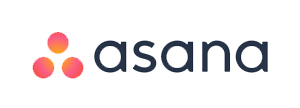 Asana is cloud project management tool focused on improving project outcome. It allows you to manage projects and tasks online. Asana is one of the easiest project management tools out there. Asana’s popularity stems from its ease of use as well as powerful features you can use for management of even complicated projects.
Asana is cloud project management tool focused on improving project outcome. It allows you to manage projects and tasks online. Asana is one of the easiest project management tools out there. Asana’s popularity stems from its ease of use as well as powerful features you can use for management of even complicated projects.
Asana works on the concept of Workspaces. When you sign up for Asana, you create your individual account. The account gives you access to Organizations and Workspaces. Workspaces include projects that in turn include tasks.
You can create separate workspace for each of your client and manage projects & tasks in corresponding workspaces. You first create projects and then add tasks to projects. You can create subtasks and recurring tasks. In each task, you can add notes, comments, attachments, and tags.
The team members update tasks as they complete them. They can update eh status, add comments and attach documents. Clients can follow projects and tasks. When the state of a project or task changes, they get email updates about the changes in their inboxes.
Asana offers a free plan that limits the team size to 15. It is good enough to for most small businesses and startups. You can upgrade to the premium version for $9.99 per user per month if you have a large team or more complex needs than the free version can handle.
Basecamp
 Basecamp is a web based project management tool. It offers to-do lists, wiki-style web-based text documents, milestone management, file sharing, time tracking, and a messaging system. Basecamp can also be integrated with other products such as “Campfire” and has APIs for integrating with a large number of applications.
Basecamp is a web based project management tool. It offers to-do lists, wiki-style web-based text documents, milestone management, file sharing, time tracking, and a messaging system. Basecamp can also be integrated with other products such as “Campfire” and has APIs for integrating with a large number of applications.
Basecamp offers a feature called “Clientside”. This feature is designed keeping in mind service and updates your clients need on the project. Your client will receive updates via email. The client doesn’t need to create any account, sign into anything, buy any system, or install any apps.
In “Talk to your team” section, you can outline work, mark deadlines and discuss strategies. All projects are private to your team. When you’re ready to share a message, a to-do, or a file with the client, just select the option to allow clients to see the messages.
One of the best things about Basecamp is that it keeps central, official versions of entire conversations. You can avoid costly and energy sapping disputes with clients later. When you present work with Basecamp, your team sees exactly what the client said. You can follow up with revisions and the entire thread is captured on a single page. It’s always clear who said what, so disputes disappear.
Basecamp charges a flat fee of $99 for unlimited number of users. This is a unique pricing strategy in the world of project management tools. Most charge starting around $10 per user per month so if you have a more than 10 team members, you can save a lot every month with Basecamp. It also has a free version limited to 20 team members and 3 projects if you want to try it before buying.
Trello
 Trello is a Kanabn project management tool that’s very popular with freelancers and small businesses. It’s best suited for managing projects with simple tasks. It does not have advanced features like resource management, dependency and Gantt chart but it makes up for that with its ease of use. You should use Trello if all you need to do is create tasks, assign them to people and track their progress.
Trello is a Kanabn project management tool that’s very popular with freelancers and small businesses. It’s best suited for managing projects with simple tasks. It does not have advanced features like resource management, dependency and Gantt chart but it makes up for that with its ease of use. You should use Trello if all you need to do is create tasks, assign them to people and track their progress.
The Trello dashboard offers overview of all tasks in a project and current status of those tasks. You can create a kanban board for each of your clients or project.
You create lists for each project. The list is a way for you to organize related tasks. For example, if you are managing a marketing project, you can create a list for each campaign.
You add tasks as a card to the appropriate list. You can drag and drop the cards between lists. For example, you can organize tasks or cards by their status. You can create one list of tasks to do and another list of completed tasks. You will add a new task to the to-do list and drag it to the list of completed tasks once it’s done.
You can assign tasks to yourself or others in your team. You can grant access to your clients also if you are on a business plan. This structure provides your client with constant updates in simple, pretty and professional manner.
You add clients as Observers to their respective boards. An observer can view the board and cards but cannot edit or move cards around. If you add your client as an observer to only one board, you don’t have to pay for them. But if you add the client to more than one board, you will have to pay for the client at the same rate as a team member.
The visual interface and simple functionality make it Trello one of the top project management tools, especially for marketing agencies/teams and freelancers.
Trello offers a free tier with limited features. Access to all features is available with “Business Class” plan which costs $9.99 per user per month. Trello is good for task management but lacks advanced project management features.
Zoho Projects
 Zoho Projects is another popular web based project management tool. It’s a powerful software with advanced project management features.
Zoho Projects is another popular web based project management tool. It’s a powerful software with advanced project management features.
Zoho Projects is cloud-based with features to plan your work, track it efficiently, and collaborate with your team. You can plan your project activities, assign tasks to team members, manage team members and collaborate with them to get things done efficiently and on time.
You can use Gantt charts to visualize your project. Gantt chart is the granddaddy of all project management techniques. It’s a visual representation on tasks in the form of horizontal bars. It shows dependencies between tasks and the critical tasks you must finish for the project to meet the deadline. It’s great to ensure your project stays on track and finishes on time.
A unique feature of Zoho project management software is the workflow automation. You can use a drag-and-drop interface to visualize and deploy workflow automations quickly and easily. Automation saves you time on routine tasks.
Zoho Projects also has a time tracker that records how much time your team members spend on each task. If you add hourly rates for your resources, Zoho can calculate and track cost for each task and project. It’s a great feature if you bill your clients on time and material basis.
Zoho project management software has a free plan that’s limited to three users and two projects. You can sign up for the paid plan if you have more team members of need to manage more than two projects. Most popular plan starts at $7/month/user for a minimum of 15 users.
MS Project
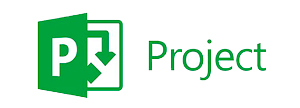 Microsoft Project is the one of the best project management software used for managing large and complex problems. It’s a versatile tool with many features for organizing, tracking and monitoring a project.
Microsoft Project is the one of the best project management software used for managing large and complex problems. It’s a versatile tool with many features for organizing, tracking and monitoring a project.
MS Project goes beyond the basic tasks any project management tool is expected to do. It is a full-fledged application with its own database, user interface and reporting system. You can organize, analyze, carry out complex scheduling and resource assignments and generate reports that help you identify problem areas quickly.
MS Project stores and presents your project data such as tasks, milestones, resources, resource assignments, costs and duration. The scheduling engine keeps track of relationships between data and displays it in multiple ways. It also performs calculations and displays results like resource utilization and percent completion for tasks and projects.
Unlike other software in this list, MS project comes in two variants – cloud based and on-premise. The on-premise version is a legacy of the old MS Office era. MS project was the de-facto project management tool till Asana and other web based software were launched. Since then, Microsoft has re-discovered the product and adapted it to the cloud.
It has all the features you would expect in a full blown project management software – task management, resource management, costing, estimation, Gantt chart, PERT CPM analysis, Kanban board, collaboration and road mapping.
As you would expect from a Microsoft product, the pricing is complex and depends on the usage options. Online only version starts at $10/user/month and goes up to $50/user/month for a hybrid license and enterprise only features. The on-premise version starts at $599for each seat.
ClickUp
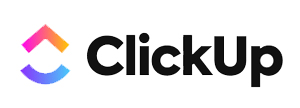 ClickUp is a very popular project management tool. It’s highly rated by users on third party review sites like Capterra. It’s probably more features than any other software on this list except MS project. In fact, there are many more features than most small businesses need. More features also make it one of the more complex project management tools on the market.
ClickUp is a very popular project management tool. It’s highly rated by users on third party review sites like Capterra. It’s probably more features than any other software on this list except MS project. In fact, there are many more features than most small businesses need. More features also make it one of the more complex project management tools on the market.
One of the things that makes ClickUp very powerful, and complex, is the customization options. You can create custom Views, statuses and fields to suit your specific needs.
Custom views allows you to view the project and its tasks in kanban/agile, list and box style. There is also a Me view that lists your tasks only. While this flexibility makes the tool very flexible it also makes it difficult to administer and manage.
Many modern project management tools that started off as a challenger to MS Project did not have the Gantt chart feature. ClickUp is one of the few new generation software that have built-in Gantt chart feature.
One of the advanced collaboration features in ClickUp is the ability to embed your MS Excel or Google Docs spreadsheets right into your project space. You don’t need to switch between different apps to get the desired information.
You can comment on tasks and assign comments to a specific team member. This ensures that the ream member gets the alerts and follows up on the task. You can also set up reminders for tasks so people don’t forget about important things.
ClickUp also has a time tracker that keeps track of time your team members spend at work. It’s a good way to build visibility and transparency in the team. ClickUp also supports integration with dozens of other tools.
ClickUp has a free version but the storage is limited to 100MB which makes it impractical for even small businesses to use it. The paid version starts at $5/user.
While ClickUp is loaded with features and reasonably priced, it’s difficult to use for anyone who is not a sophisticated user. Most small business users get overwhelmed with the complexity of user interface, options and features.
Wrike
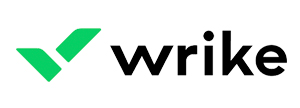 Wrike is one of the best project management tools for agile teams.
Wrike is one of the best project management tools for agile teams.
It’s award-winning three-Pane interface makes it super easy to use and track your work. The left pane contains project hierarchy here you can edit and adjust tasks/subtasks. The middle pane lists your current tasks in the project. The right pane shows detailed information about your tasks.
This intuitive interface makes it super easy to manage everything in one place. You can monitor task progress, dependencies, team communication and overall project progress in the same view.
You can customize Wrike to suit the needs of your business. You can create custom dashboards, workflows and automation that streamline your project management processes.
Wrike has real-time commenting and notifications live editing and dynamic reports. You can instantly see what your team members are doing or saying. This eliminates the need for needless emails, meetings and status updates from everyone. You can share the updates with all stakeholders, including clients so everyone stays current on the status of the project.
Wrike support Gantt charts for you to visually track the project schedule and status. It also shows resource allocation so you can easily see who in your team is overloaded with work and who has free cycles. Wrike integrates with many popular third party software and apps you use every day to run your business. Wrike has an enterprise security architecture.it means your data and information is safe and secure.
The free plan has a limit of 5 users and supports only a shared task list. Think of it as a shared to-do list. If you need real project management features, you need to upgrade to a paid plan starting at $10/user/month.
Just like MS project and ClickUp, Wrike is also targeted at bigger businesses with its plethora of features that big businesses need. It’s an overkill for most small businesses that have less complex needs and fewer users.
Monday
 Monday is another popular online project management tool. It was called Dapulse in its previous avatar. It has been gaining rapid popularity since the rebirth as a flexible and more scalable solution for managing projects and tasks.
Monday is another popular online project management tool. It was called Dapulse in its previous avatar. It has been gaining rapid popularity since the rebirth as a flexible and more scalable solution for managing projects and tasks.
Unlike other project management tools, Monday allows you give access to your project information to people outside your team. You can control their access rights to make sure they can see only projects that are assigned to them.
One of the most powerful features of Monday is its customizability. Its’ like creating a worksheet. You can add new columns/fields to your tasks to suit your project needs. You can use pre-defined fields or create your own fields.
You start out by creating a board. You can create a board for anything you use to organize your work – projects, clients or departments. You can add as many columns or fields as you need and customize them to suit the needs of the board.
You can assign tasks to your team members and see their progress. It also has a time tracker in case you want to track your team members’ time. The powerful dashboard shows you the status of your boards in a glance. It’s a great way to stay on top of your projects.
You can assign capacity (or hours) to each team member and assign the capacity to each task. This allows you to see how if anyone is overloaded or under loaded so you can redistribute the work to balance it. You can create code-free automations to your boards to minimize human errors. Automation allows your team to focus on more value-added work.
Monday integrates with almost any third party app you can think off. You can even create your own custom apps on top of the Monday platform. This makes Monday one of the most powerful project management apps on the market today.
Monday does not have a free version but offers a free trial. Paid plans start at $8/user/month with a minimum of 5 users. If you want access to features like Calendar and Timeline Views, you need to buy the $10/user/month plan.
Monday is one of the most flexible project management software on our list. It’s almost like an app development platform. But this power and flexibility comes at the cost of simplicity and ease of use. Monday is clearly targeted at larger, enterprise customers that need a lot of flexibility and have internal resources to customize/build on top of Monday.
Hive
 Hive is one of the more established project management software. It’s quite powerful with most modern features we have come to expect from a full featured project management tool.
Hive is one of the more established project management software. It’s quite powerful with most modern features we have come to expect from a full featured project management tool.
You can organize your projects in a Gantt chart, Kanban board, table, or calendar view. You can also switch between these views as needed. Any updates to project are reflected immediately across all views so everyone in your team is on the same page.
One of the coolest features of Hive is the ability to combine multiple projects to get a view of the big picture across your company or department. You can sort projects can be sorted current status, team members or labels.
You can plan and repeat tasks using action templates. You can lay out the required steps in an action template to assign tasks to the right people, at the right time. The templates are usable so you can automate the work.
Each task in your project has an Action card. You can see all the information needed for a task by assigning team members, attaching files, creating subactions, setting dependencies, and commenting directly on the action card.
Hive makes it super easy to get feedback and approve work. You can create approval cycles with the ability to assign approvals, share proofs, and provide feedback. You can even use forms to collect important information about the tasks from people outside your organization such as your clients.
Hive uses AI and machine learning to create interactive dashboards that give you actionable insights on team productivity and proactively spot risks. You can also track time and generate timesheet from the tracked information to automation timesheet creation and approval.
Hive does not have a free plan but offers a 14-day free trial. Unlike other project management software on this list, Hive has only one price plan that starts at $12/user/month. You can add additional features by paying extra.
Hive is one of the more expensive project management tools and is geared towards larger businesses that need advanced reporting and features to manage their teams and projects.
HiveDesk
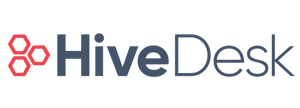 We could not resist adding HiveDesk to this list project. After all, it’s our baby!
We could not resist adding HiveDesk to this list project. After all, it’s our baby!
Unlike other software on this list, HiveDesk is not a full-fledged project management tool. You can create tasks in your projects and assign them to your team members. You can track task status and see which ones are completed and which ones are past their due date. At its core, it’s a tool for managing remote or distributed teams.
HiveDesk has a desktop application that tracks time your team members spend on each project. Automatic time tracking ensures an accurate timesheet you can rely on for paying your employees and billing clients. You can generate individual timesheets for each employee or a combined timesheet for the project.
You can even track your cost for each project by assigning an hourly cost to each team member. HiveDesk automatically calculates how much cost you’ve incurred on each project by multiplying the hourly rate with actual time spent on the project.
Most small businesses find HiveDesk very well suited to their needs and simple to use. The user interface is simple and straight forward. There are no confusing features that can overwhelm your team. You get all important reports that you need to manage your projects and teams.
HiveDesk has a 14-day free trial. You don’t need to add your credit card details to start the free trial. Select a plan and enter your payment details once you are ready to start using it. Plans start at $15/month for 3 users and account owner.
HiveDesk is best for small and growing businesses that don’t need to manage complex projects. It works really well for teams that have remote employees or those working from home.
Conclusion
Finding the best project management software for your small business isn’t easy given the number of great options available these days.
While all tools on this list are extremely good, only a handful will be a good match for your specific needs. Buying a software that has more project management features than you need will cost you more money and unnecessary complexity. So choose one that has everything you need while being simple enough for your team to use it effectively.

